Our Verdict
Cheap speakers are better than no speakers, and if you’re looking for something to bring gaming or streaming audio to life they’re good for the price. What they’re not is room-filling bass monsters, but then you need to spend a little bit more to get that kind of thing.
For
- Budget price
- Decent sound reproduction
- Small and easy to pack away
Against
- Bass isn’t huge
- Bluetooth implementation very basic
- Why bother with the RGB?
PC Gamer's got your back
Anyone old enough to remember when PCs would try to use their buzzer speaker—the one meant to give audio feedback on motherboard errors—for in-game audio will know the value of a basic pair of desktop computer speakers. Even though we no longer need to plug soundcards into our gaming machines, the ability to output music that doesn't sound like a horde of angry wasps learning to play the kazoo in a sex toy factory is important in a world where games have actual composers working on them rather than expressing themselves through a series of bleeps the programmer made up. No disrespect to Jeff Minter there.
Even having a basic pair of desktop speakers can elevate your gaming over hooking up to some earbuds via Bluetooth (or, heaven forbid, using the speakers built into your monitor). And the Creative Pebble Pro is most certainly a basic set of desktop speakers.
You can get cheaper ones, sure, and you can definitely get more expensive ones. You can get ones with more bass and more inputs, but these cheap speakers from computer audio specialist Creative have got you covered for most game music and sound effects, and look pretty alongside your monitor too.
If you were ever lucky enough to use one of Apple's short-lived G4 Cube computers (or the iMac with the angle poise neck), you'll have seen spherical speakers like this before. While the Cube's were transparent, these come in dark green, white, or black, and have lights in them.
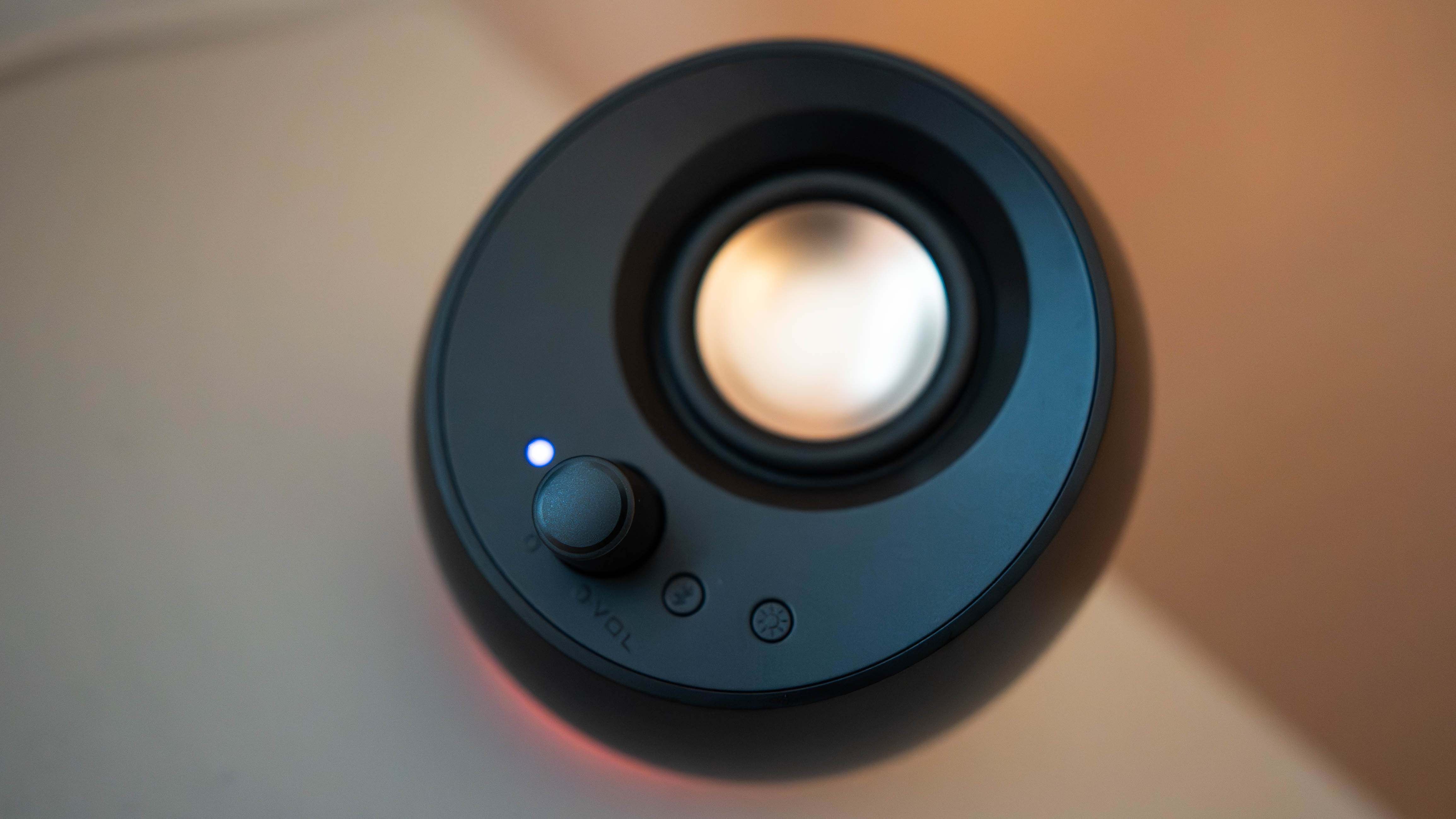
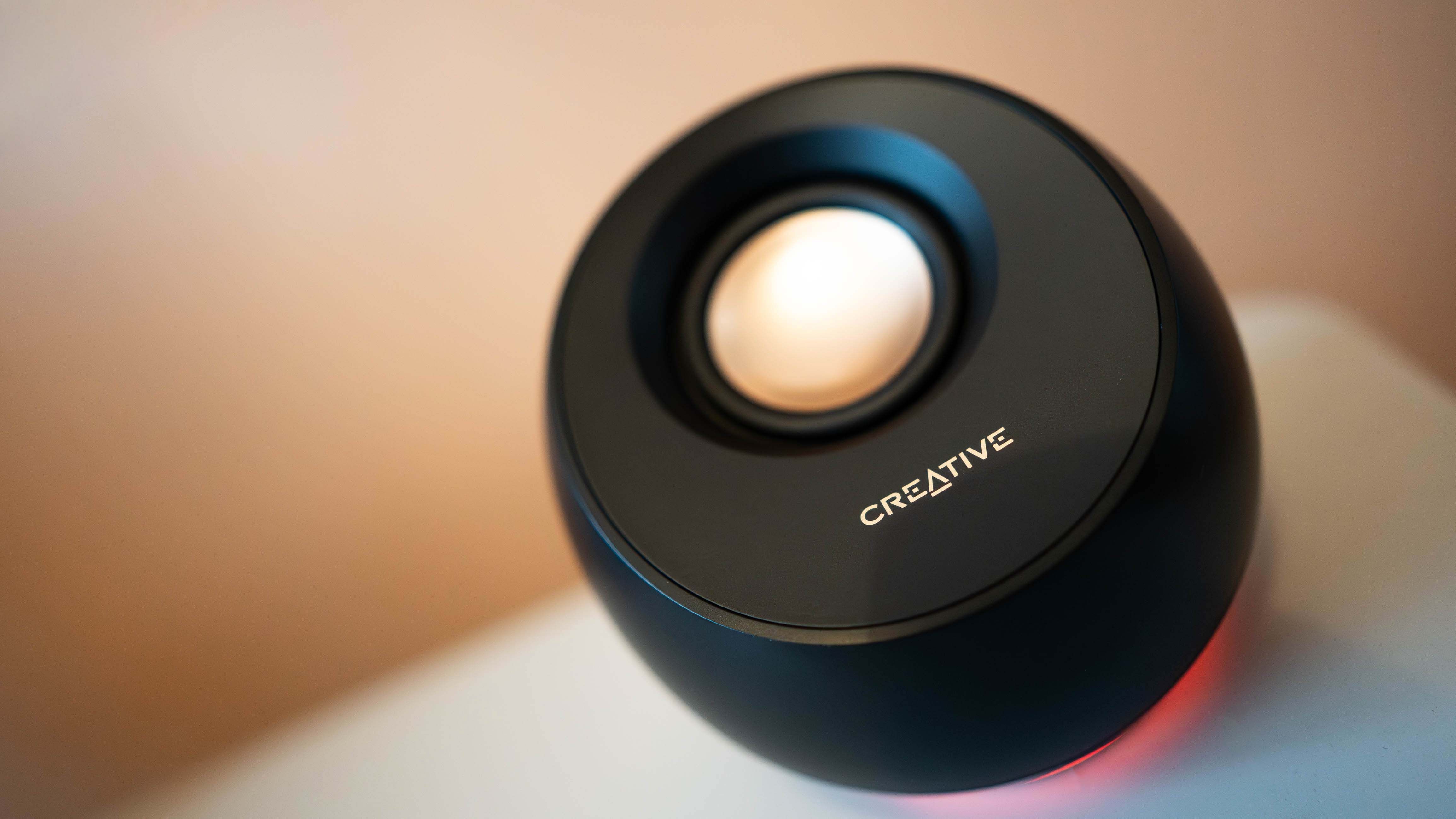
✅ You want capable desktop speakers: The Creative Pebble Pros may not have a lot of frills, but they're solid budget desktop speakers that give clear dialogue and a surprising amount of volume for all kinds of media, not just gaming.
❌ You're happy with your earbuds: There's nothing wrong with doubling up and using some buds for PC gaming. That kind of frugality is laudable, but unless you're the type who listens to their TV using headphones all the time, speakers are more comfortable to use.
It's actually a pretty nifty piece of design, as the 2.25-inch drivers are angled up in the certain knowledge that your ears aren't down on the desktop itself, and there's a captive cable well over five foot long to connect the pair, so you can put them either side of your screen even if you're using one of those monstrous 49-inch ultrawides.
So, while you can connect these speakers to your PC using Bluetooth, you're better off not doing that, as they only support the SBC codec. That's the default setting, the fallback position, and there are many better codecs out there, such as AAC or AptX. Bluetooth connectivity works, but for the best sound from the Creative Pebble Pro speakers you're going to want to use a wire.
For this, you have a choice. There's a USB-C input, and a 3.5 mm aux port (you get cables for both of these) at the back of the right-hand speaker, and 3.5 mm sockets for headphones and a mic on the side. You'll want to use the USB input, as it also provides power to the speakers, though a quirk of its design means that, if you do this, you're limited to 20W of sound power. Use the other USB-C port to connect a power supply of 30W or greater, and you'll unlock the Pebble Pros' more powerful 30W mode. This adapter isn't included in the box, so you'll need to repurpose an old tablet charger or other USB PD block.
Keep up to date with the most important stories and the best deals, as picked by the PC Gamer team.
You can cycle through the inputs using the button on the front of the right speaker marked, confusingly, ‘Bluetooth', and there's also a volume control knob and a button to dim the lighting too.
The lights are all around the base of the speakers, and spills out around the sides like a coffee stain. It's not really clear what the intention is behind light-up speakers—I'd rather Creative had left the lighting out and put in more Bluetooth codecs.
Do you need to know where they are? If so, a light on the volume control might be of more practical use. It doesn't help you find the inputs on the back if you want to plug a new one in, but it does look quite nice when you've got them either side of a laptop and the room lights turned down. You can't customise the lighting with an app, it's all done using the buttons on the front, but you can have them pulsate or stay on steadily, and change the colour by rotating the volume knob.
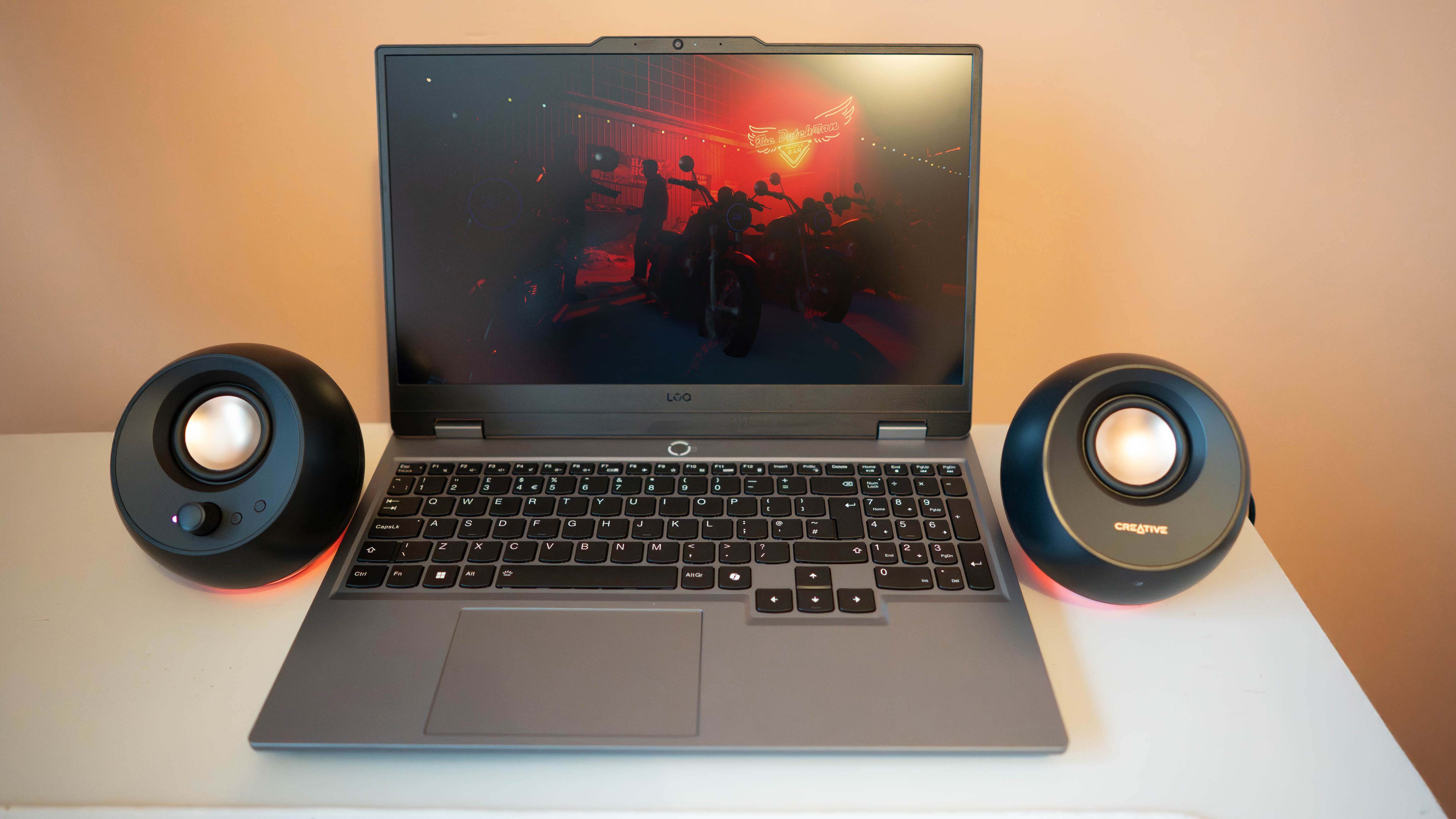
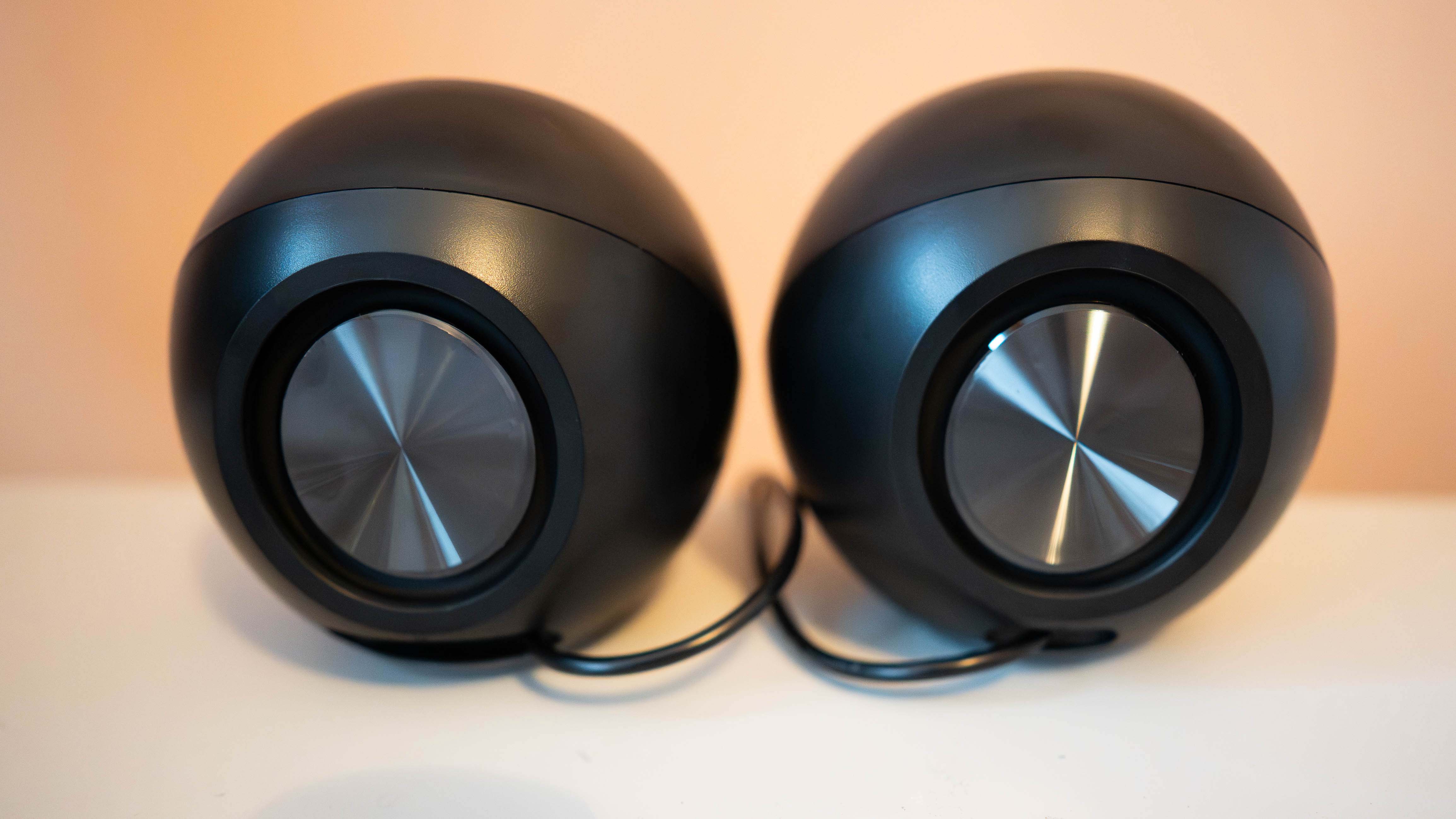
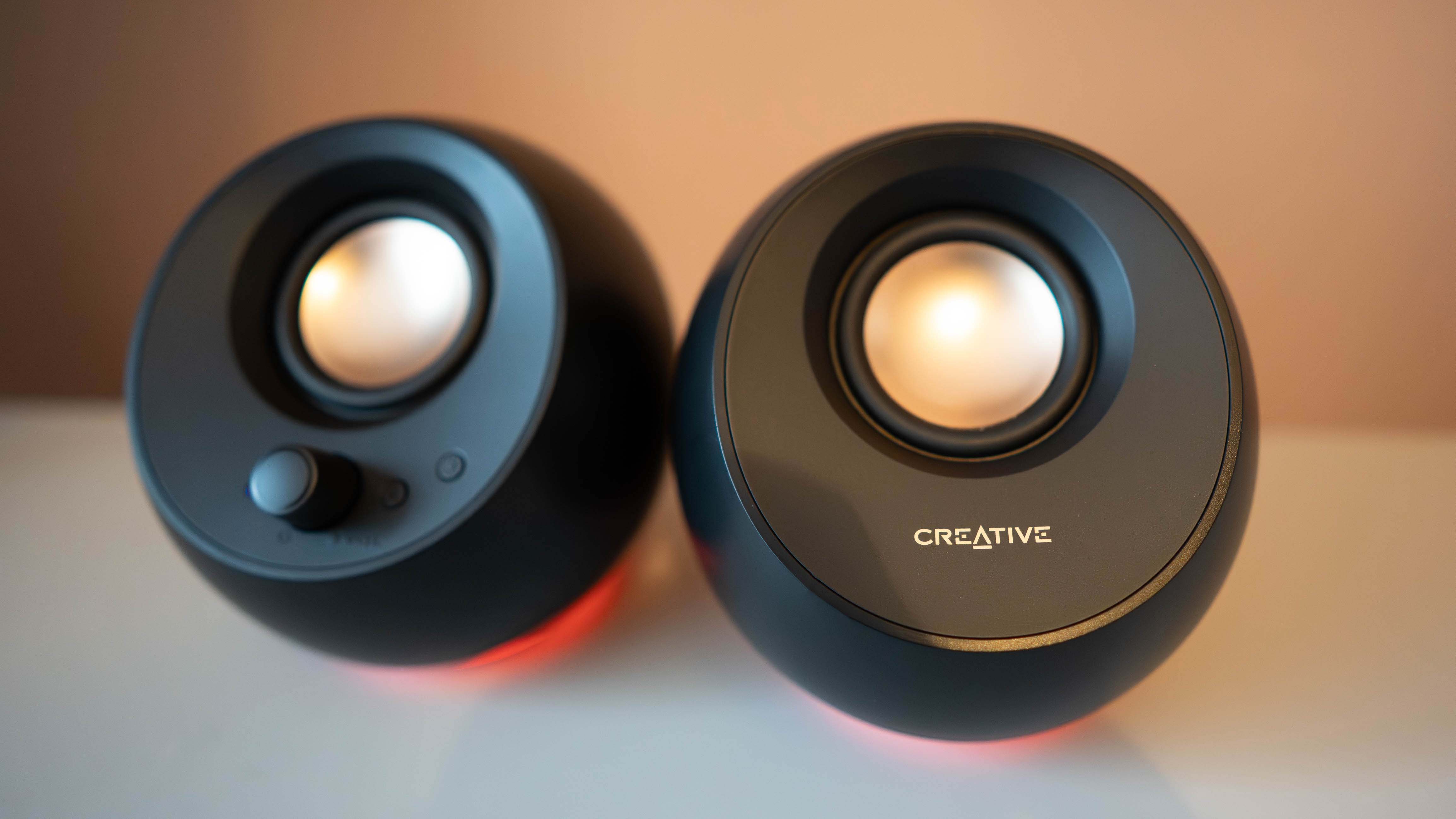
As a 2.0 speaker set built into compact frames, we shouldn't be expecting too much in the way of bass from the Pebble Pros (you'll want to look at the Pebble Plus if you like the shape but want a subwoofer), but they do a surprisingly decent job. Gunfire and engine noises get some thickness in the lower frequencies, but if you're using them to listen to music through then there's a lack of detail. Mid-range and treble fare much better, and the speakers are excellent for dialogue—something Creative's audio processing is designed to enhance.
The frequency response runs from 80 - 20,000 Hz, and despite being small they hold up well at higher volumes, though there's some vibration from the casing. They don't really start to distort until you're operating at sound levels more appropriate for a party than PC gaming. The angle of the speakers also comes into its own in situations where you can position them so you sit in the sweet spot, such as at a desk, rather than wandering around the room.
Compared to other speakers they can lose out, however. Creative's own T30 Wireless from over 10 years ago, which have a wider frequency response thanks to bass ports on the top of their casings, outperform the Pebble Pros when it comes to the lower frequencies, but aren't as good for voices.
They also have the same basic Bluetooth functionality as the Pebble Pros, which is something you'd hope Creative would have worked on in the intervening years. Meanwhile, a JBL Bluetooth speaker in about the same price bracket produces a better result for music, its cylindrical shape filling the space more effectively than the more directed audio of the Pebble Pros.
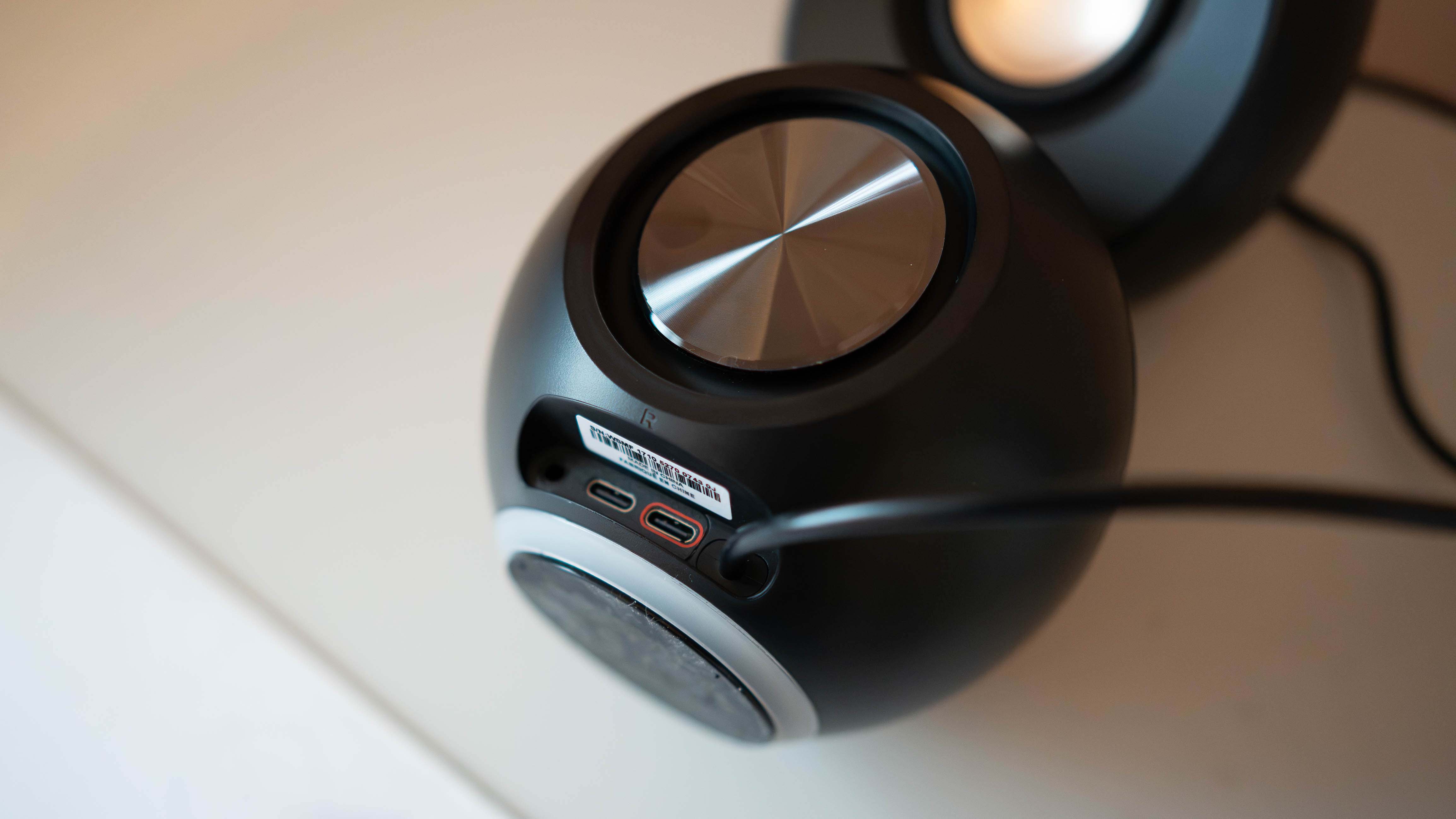
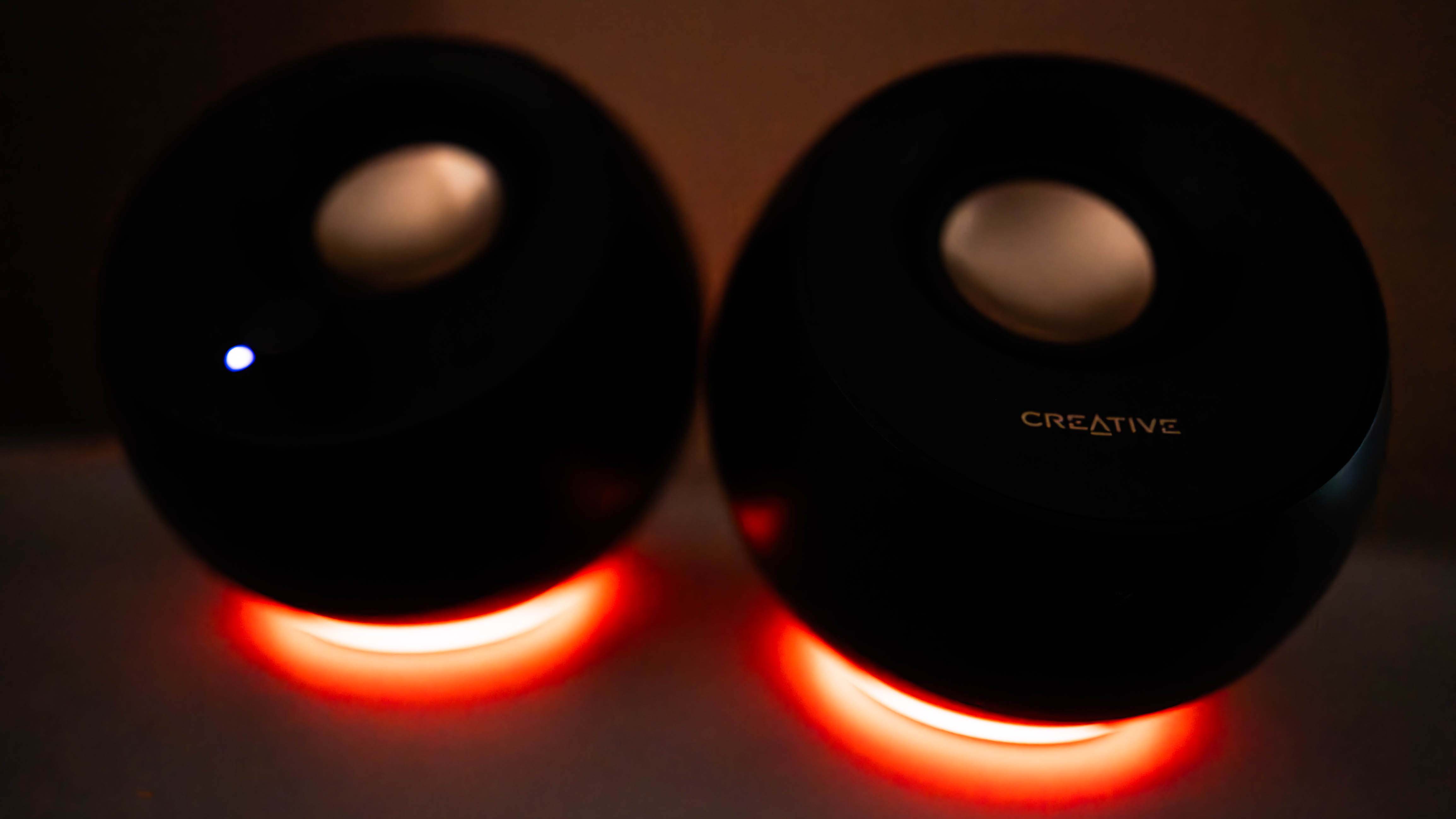
So, if you're looking for something to amplify the beeps and boops Windows 11 makes from time to time, or give your gaming audio a surprisingly loud stereo makeover, then Creative's Pebble Pro speakers could make a good budget choice.
You have to see them in the context of what they're not, however, and they're not some of the best Bluetooth speakers, they're not particularly room-filling, and they're not going to give you the kind of bass that makes you fall off your chair. They're an upgrade over having no speakers, however, and perhaps that's what's most important.
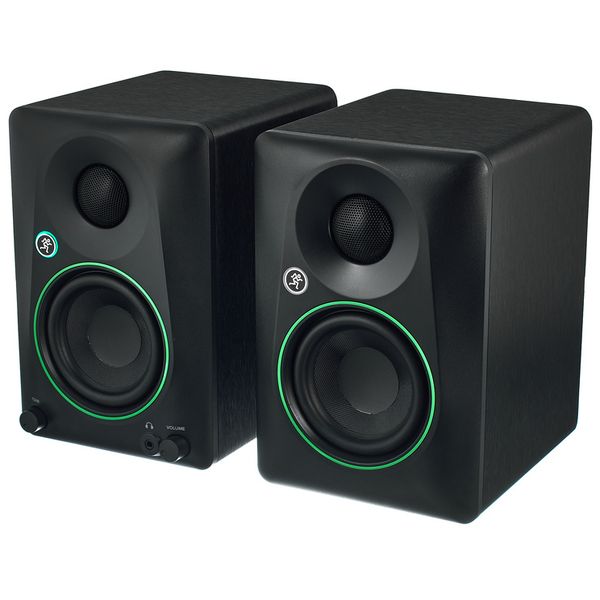
1. Best overall: Mackie CR3.5BT + CR8SBT
2. Best budget: Creative Pebble Plus
3. Best midrange: Logitech Z407
4. Best gaming soundbar: Creative Sound Blaster Katana V2
5. Best wireless gaming soundbar: BlueAnt Soundblade
6. Best bookshelf speakers: FiiO SP3 BT
7. Best reference speakers: Kanto Ora
Cheap speakers are better than no speakers, and if you’re looking for something to bring gaming or streaming audio to life they’re good for the price. What they’re not is room-filling bass monsters, but then you need to spend a little bit more to get that kind of thing.

Ian Evenden has been doing this for far too long and should know better. The first issue of PC Gamer he read was probably issue 15, though it's a bit hazy, and there's nothing he doesn't know about tweaking interrupt requests for running Syndicate. He's worked for PC Format, Maximum PC, Edge, Creative Bloq, Gamesmaster, and anyone who'll have him. In his spare time he grows vegetables of prodigious size.
You must confirm your public display name before commenting
Please logout and then login again, you will then be prompted to enter your display name.

